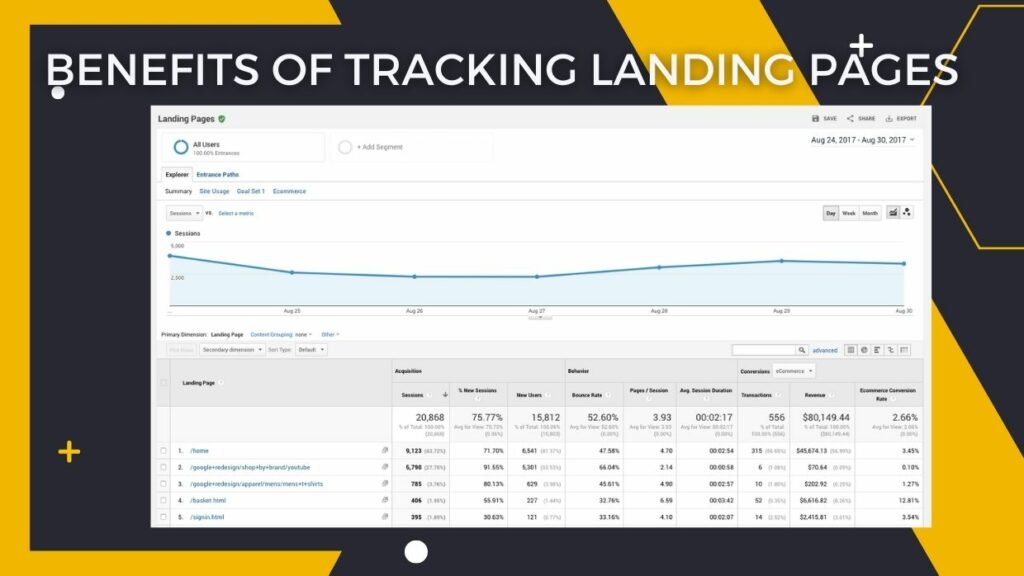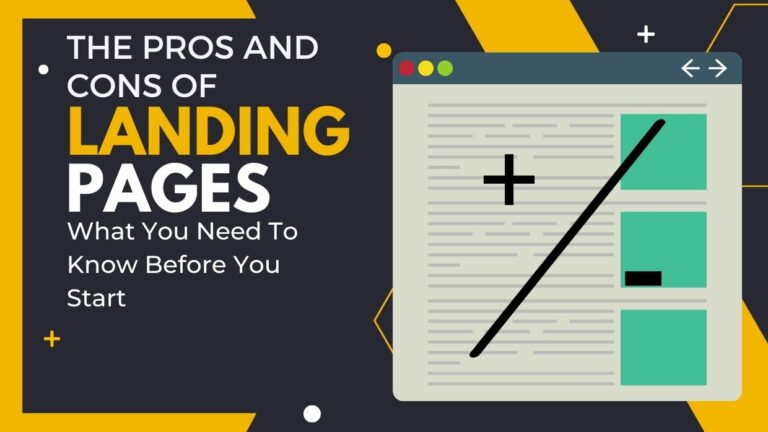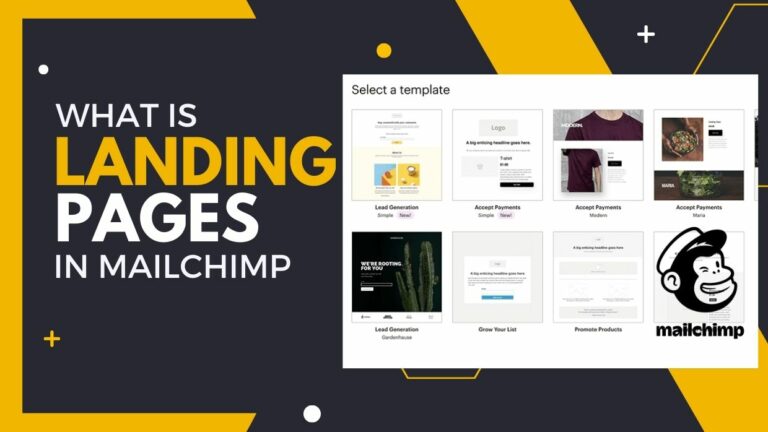What is Landing Page in Google Analytics
“What is Landing Page in Google Analytics”. Are you interested in tracking your website’s performance and engagement levels? If so, then you’ve likely heard of Google Analytics – a powerful tool that provides valuable insights into user behavior on your site. But have you ever wondered what a landing page is in Google Analytics, and why it’s such an important metric to track? In this blog post, we’ll explore the definition and significance of landing pages in Google Analytics, as well as offer some tips for optimizing them to increase conversions and drive business success. So buckle up and get ready to discover how landing pages can make or break your online presence!
Introduction to Landing Page
A landing page is a web page that allows you to track conversions and goals. You can use landing pages to track the success of your online marketing campaigns, including pay-per-click (PPC) campaigns, email campaigns, and more.
To set up a landing page in Google Analytics, you’ll need to create a new property. To do this, go to the Admin section of your Analytics account, then click on “Create Property” under the “Property” heading. On the next page, select “Website” as the type of property you want to create.
Once you’ve created your new property, you can set up a landing page by going to the “All Pages” report under the “Behavior” section. From here, you can click on the URL of any page on the website that you want to track as a landing page.
When setting up your landing page, be sure to include any relevant information that will help you track your goals. This includes the name of your campaign, the source of your traffic, and any keywords or other tracking parameters that you want to include.
What is Landing Page in Google Analytics?
A landing page is the first page that a visitor sees when they arrive at your website. Google Analytics tracks landing pages so you can see which pages are most popular with your visitors. You can also use landing pages to track conversions or the number of people who take a desired action on your website such as signing up for a newsletter or making a purchase.
Analytics can also help you identify which landing pages need improvement, as well as track how visitors interact with your site. This information can be used to optimize your website for better user experience and increased conversions.
Benefits of Tracking Landing Pages

There are many benefits of tracking landing pages in Google Analytics. By tracking landing pages, you can see which pages are being used most often to enter your website.
This information can be used to improve your website’s design and user experience. Additionally, tracking landing pages can help you identify areas of your website that may need more attention or improvement.
How to Configure the Landing Page Report in Google Analytics
The Landing Page Report in Google Analytics can be found under the Behavior > Site Content section of your dashboard.
To configure the report, you will need to set a few options:
- Set the date range for which you want to view data. The default date range is the past 30 days.
- Choose whether to view data for All Pages or just Landing Pages. Landing Pages are defined as the first page that a user views during a visit to your site.
- Select the Metric Groupings that you want to include in the report. The available metric groupings are: Pageviews, Unique Pageviews, Entrances, Bounce Rate, and Exit Rate.
- Choose how you want the report data to be sorted. The available options are: by Pageviews (default), by Unique Pageviews, or by Entrances.
- Finally, click Apply to save your changes and generate the report.
Best Practices When Using Landing Pages
There are a few key things to keep in mind when using landing pages to get the most out of them. First, make sure your landing page is relevant to the keywords you’re targeting. If you’re targeting “weight loss,” for example, your landing page should be about weight loss and not something else entirely.
Second, keep your landing page simple and to the point. Don’t try to cram too much information onto the page or you’ll risk overwhelming visitors and losing their interest. Stick to one key message and make it easy for visitors to take action on that message.
Finally, make use of A/B testing to see what version of your landing page performs best. Try different headlines, images, and calls to action to see what gets the best results. Landing pages are a great way to boost your conversions, so it’s worth taking the time to optimize them for maximum impact.
How to Optimize Your Landing Pages for Maximum Impact
If you’re not sure what a landing page is in Google Analytics, it’s simply the first page that a visitor sees when they come to your site. In order to make sure that your landing pages are effective, there are a few things you can do to optimize them for maximum impact.
First, take a look at your page layout and make sure that it’s easy to navigate and understand. Visitors should be able to quickly see what your page is about and find the information they’re looking for. If your layout is confusing or cluttered, they’re likely to leave without taking any action.
Next, focus on your content. Make sure that it’s well-written and relevant to your target audience. Landing pages with strong content are more likely to convert visitors into leads or customers.
Finally, pay attention to your call-to-action (CTA). This is the button or link that you want visitors to click on in order to take some desired action, such as subscribing to your newsletter or making a purchase. Your CTA should be clear and visible, and it should stand out from the rest of your page so that visitors can’t miss it.
By following these tips, you can optimize your landing pages for maximum impact and ensure that they’re working effectively towards your business goals.
Read more… What is Landing Page in Google Ads
Conclusion
The landing page in Google Analytics is a powerful tool for analyzing user behavior on your website. It can provide valuable insights into how users interact with your site and where they’re entering from, allowing you to optimize the user experience and drive more conversions. By taking advantage of this data, businesses can increase their ROI and improve overall performance. With the help of landing page analysis, companies are able to create an engaging website that drives traffic and leads to increased sales.







